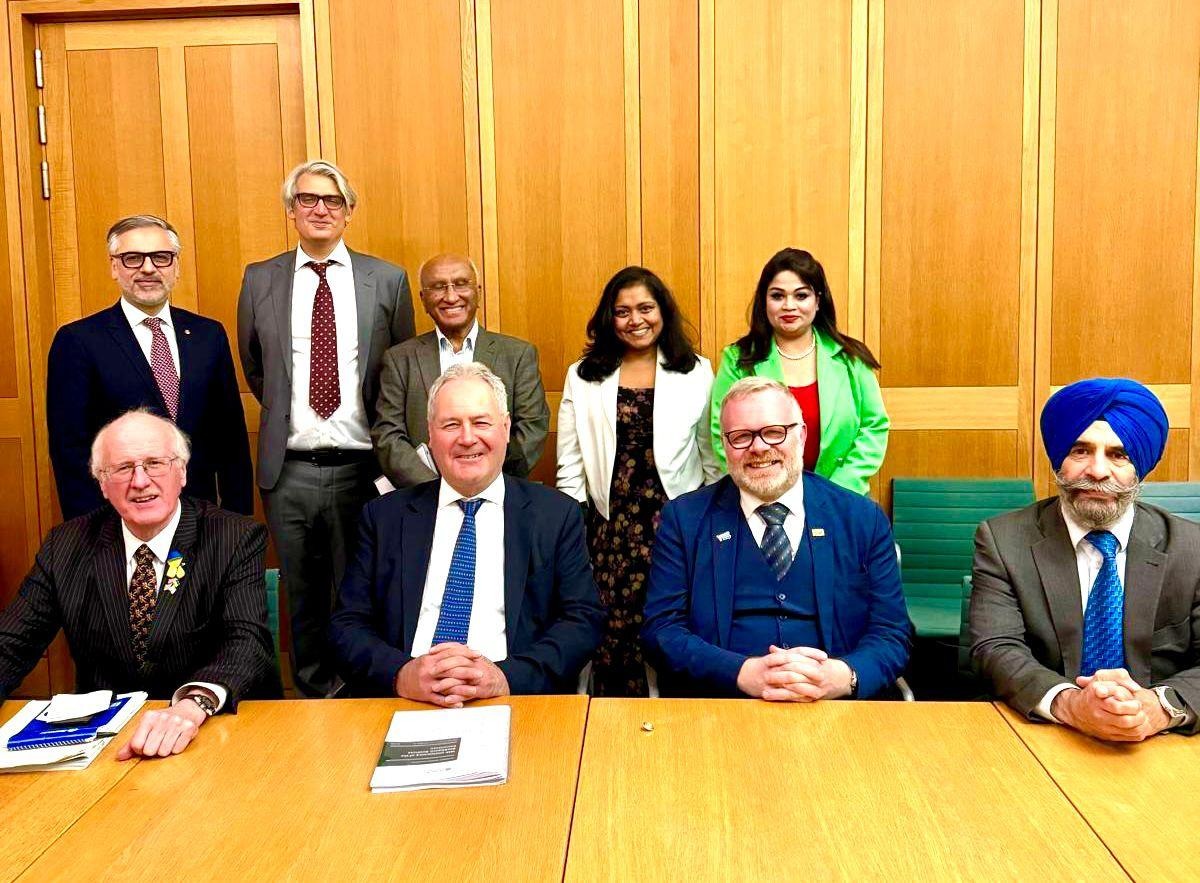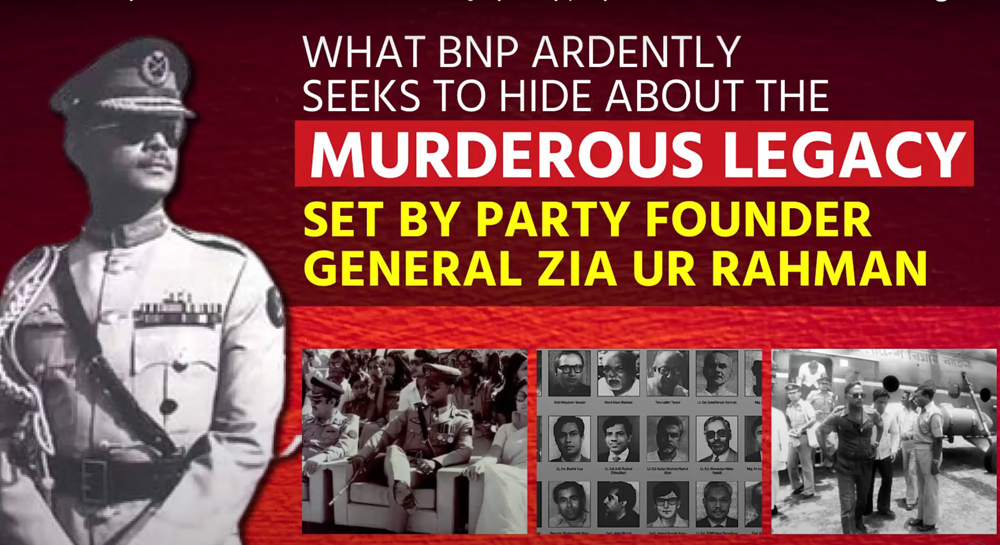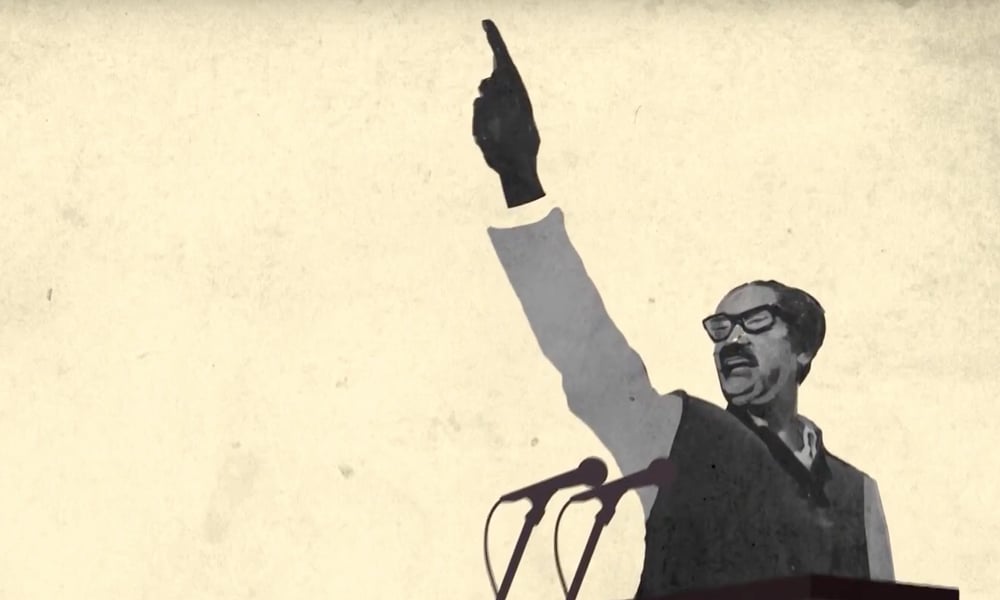16499
Published on June 11, 2024Sheikh Hasina had to overcome obstacles in every step of her life. She lived in exile for six years after the assassination of her father, Bangabandhu Sheikh Mujibur Rahman and his family in 1975. She re-established parliamentary democracy through a decade-long movement against autocracy. After becoming the Prime Minister in 1996, she made the country self-sufficient in food. But even then there have been repeated attempts to kill her. She even had to go to prison. Even then she is building Bangladesh in a new form.
The Plot behind 1/11 Situation
In 2001, the BNP-Jamaat alliance seized power in a rigged election. Then their five-year term ended with a festival of corruption and misgovernance. On 28 October 2008, they were to hand over power to a universally accepted caretaker government. But Khaleda Zia tried to illegally seize state power to continue the looting, appointing two relatives of Bangabandhu's killer and a former BNP leader as the chief advisers to the caretaker government. The Awami League strongly objected to this. Sheikh Hasina, daughter of Bangabandhu and the then Leader of the main opposition, demanded that a non-partisan and acceptable person be appointed to the post as per the constitution. However, on the advice of Khaleda Zia, the wife of dictator Ziaur Rahman, on the night of 29 October, violating the constitution, BNP-backed President Iajuddin Ahmed was sworn in as the chief adviser to the caretaker government resulting in a constitutional crisis.
In the midst of this stalemate across the country, the election schedule was announced on 7 December and the poll date was fixed on 22 January by the BNP-Jamaat-controlled Election Commission. Then, on 10 December, President Iajuddin Ahmed ordered the deployment of military forces in the country. Sheikh Hasina announced a boycott of the elections as the situation did not improve even after lengthy negotiations. The BNP-Jamaat alliance did not deviate from the unilaterally arranged election schedule. Then, on 5 January, the influential London newspaper The Economist reported that the forthcoming unilateral election in Bangladesh was meaningless.
Meanwhile, some members of the military took advantage of the turbulent political situation in the country to seize power. On 11 January 2007, the then Chief of Army Staff, Moin U Ahmed, and three other Army members visited Bangabhaban. On their advice, the president and chief adviser, Iajuddin Ahmed, resigned as head of the caretaker government and declared a state of emergency in the country. In the middle of the night, they appointed Fakhruddin Ahmed as the chief adviser to the caretaker government. As a result, the ruling power of the country passed into the hands of military officials, unannounced. Military rule began in the country in the guise of civil authority. The election process was suspended indefinitely. Even attempts were made to disband the political parties in order to usurp power in the long run and a conspiracy was hatched to send the Awami League chief Sheikh Hasina into exile.
Sheikh Hasina fights State Mechanism & Conspiracies
Awami League President Sheikh Hasina was seriously injured in a grenade attack at a public meeting on Bangabandhu Avenue on 21 August 2004 under the auspices of the BNP-Jamaat government. She was supervised by doctors in the United States for long-term treatment of damaged ears and eyes. So she took a visa to the United States on 13 March 2008 for treatment. She left for the United States on a British Airways flight two days later. She had announced that she would return to the country within a month after the treatment. Accordingly, Sheikh Hasina was scheduled to return to the country on April 23 after the visit. But when the time came for her to return to Bangladesh after treatment, she had to face a new conspiracy.
On 17 April 2008, a press note from the Home Ministry stated that Sheikh Hasina had been banned from returning home on the 23rd. The controversial caretaker government even sent a message to all the airlines not to carry Sheikh Hasina. Several government advisers threatened her. She was also told that the situation would not be good when he came to the country.
However, ignoring the bans and threats of the controversial government, the courageous leader Sheikh Hasina decided to return to the country on the scheduled date. She arrived in London on the afternoon of 19 April to return home at the pre-announced time. But due to the instructions of the caretaker government of Bangladesh, she was not given a boarding pass to return home from London's Heathrow Airport. Even an arrest warrant was issued in her name on 22 April to stop the process of her return. Meanwhile, at Sheikh Hasina's direction, her lawyers challenged the validity of the official press note and sought permission to file a writ petition in the High Court seeking directions to remove the impediment to Sheikh Hasina's return to the country. Then, on the afternoon of 26 April, his travel ban was lifted.
Finally, thwarting the BNP-Jamaat alliance conspiracy and ignoring threats of the caretaker government Sheikh Hasina returned to the country on 7 May. She demanded fair elections after returning to the country. But to suppress her fearless voice, he was arrested on 16 July in a false case.
A 331-day ordeal in a lonely prison
It was the morning of 16 July 2006 when the joint forces entered Sudhasadan. Earlier, more than 2,000 police, RAB and other forces had cordoned off Sheikh Hasina's residence from the night before. At 8.30 am, she was rushed to the CMM court after being arrested in a case. The court rejected her bail application and she was taken to the sub-jail in the Parliament building area.
Since the arrest of Sheikh Hasina, protests and movements had been going on every day across the country. On 23 June there were protests in front of the US State Department demanding the release of Sheikh Hasina led by her son and Bangabandhu's eldest grandson Sajeeb Wazed Joy. At the same time, various countries including Canada, Australia and Britain protested against the arrest internationally.
In jail, Sheikh Hasina’s ears and eyes injured in the grenade attack continued to suffer further damage due to lack of treatment. As the situation deteriorated, she reached an unbearable level but no good treatment was provided for her. On 31 March 2007, the former prime minister expressed her displeasure to the lawyers when he was asked to appear in court. "I was nearly killed in a grenade attack on 21 August. Now they are trying to kill me by not providing treatment.”
She was eventually taken to a private hospital. After 20 days of treatment, she returned to normalcy and was advised to go abroad for better treatment.
Speaking to lawyers in court in May 2008, people’s leader, Sheikh Hasina, expressed doubts about the lives and livelihoods of the people of the country. At the same time, she hoped that the Awami League would win by a huge margin if the elections were fair.
Release of the people’s leader and her triumphant return to power
After Sheikh Hasina was imprisoned in a false case in 2007, a total of 13 cases were filed against her one after the other. On the contrary, during her 331 days of imprisonment, she kept a regular diary and created a vision for the future of Bangladesh. Throughout the year, students, teachers, professionals, party leaders and activists demanded her release.
Mass arrests and harassment of Awami League leaders and activists began on the instructions of the caretaker government controlled by the BNP-Jamaat clique and some military members. However, the party announced that no council would be formed till the release of Sheikh Hasina.
Finally, on 23 May 2008, at an extended meeting of the Awami League, the grassroots leaders of the party's 72 organizational branches expressed full confidence in Sheikh Hasina and announced to intensify the ongoing movement across the country for her release from prison. On May 27 and 28, an executive meeting of the Awami League decided that Sheikh Hasina should be given unconditional release and medical treatment abroad. After this announcement of the Awami League, mass arrests started all over the country. About 20,000 people were detained.
In the end, all the conspiracies of the miscreants failed in the face of the popularity and personality of the public leader, Sheikh Hasina. On 11 June 2008, they were forced to honourably release Sheikh Hasina, the daughter of Bengal.
Then Sheikh Hasina announced the “Charter of Change of Days” to change the destiny of the people. As a citizen of a welfare state, all kinds of benefits are ensured for the people in this manifesto.
Based on the foresight and courageous leadership of Sheikh Hasina, the 14-party alliance led by the Awami League won a landslide victory in the national elections held in December 2008. Out of the total 267 seats won by the alliance, the Awami League got 230 seats.
At the initiative of this government, 50 million people were raised to the status of the middle class by increasing civic amenities. People's per capita income and standard of living continued to increase. The country started moving forward on the path of prosperity.
Keeping the spirit of the War of Liberation high, Prime Minister Sheikh Hasina also won the 2014 elections by announcing a zero-tolerance policy against terrorism and militancy alongside Vision 2021. With the victory in the 11th general election of 2018, she fulfilled the promise of building the Padma Bridge thwarting conspiracies at home and abroad. She also successfully built the Dhaka Elevated Expressway, the first-ever underwater tunnel in South Asia 'Bangaabndhu Tunnel". Because of her firm determination, the Metrorail project is now running through Dhaka. The first-ever nuclear power plant is also close to starting its operation with another one in the pipeline. In 2024, she won the election fourth time in a row despite constant threats and political pressures from the West. Bangladesh is now getting its name on the list of the developed world. Digital Bangladesh has now spread the boundaries of dreams and has emerged as a wonder of the world. Bangladesh has regained its respect in the international arena as a nation of heroes.














